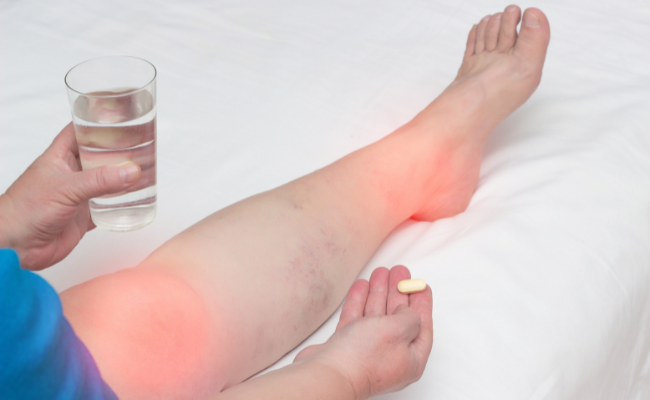How to Treat Lymphoedema?
- October 27, 2023
- No Comments

What is Lymphoedema?
Lymphoedema is a persistent swelling, often observed in the arms or legs, resulting from the abnormal accumulation of lymphatic fluid. This chronic condition stems from a compromised lymphatic system, responsible for draining excess fluid and maintaining immune function. Disruptions to lymph nodes, vessels, or other components impede normal lymph flow, leading to the associated swelling. Lymphedema, on the other hand, presents as swelling in various body parts, indicating disturbances in the lymphatic system. This essential system collects excess fluid, proteins, and toxins from cells and tissues, effectively redirecting them back into the bloodstream.
Why is Treating Lymphoedema Important?
- Managing Swelling: The hallmark symptom of lymphoedema is swelling, which, if left untreated, can progress and become more challenging to manage. Effective treatment is crucial for controlling and reducing this swelling, improving the affected individual's comfort and mobility.
- Preventing Complications: Untreated lymphoedema poses risks of complications, including recurrent infections, reduced mobility, and changes to the skin. Timely and appropriate intervention helps prevent these complications, preserving overall health and well-being.
How to Treat Lymphoedema?
Complete Decongestive Therapy (CDT):
A comprehensive and widely accepted approach to managing lymphoedema is Complete Decongestive Therapy (CDT). CDT involves multiple components, including:
- Manual Lymphatic Drainage (MLD): This specialized massage technique is performed by a trained therapist. MLD aims to stimulate lymphatic flow, facilitating the drainage of excess fluid.
- Compression Therapy: Wearing compression garments, such as sleeves or stockings, helps maintain reduced swelling by providing external pressure on the affected limbs.
- Exercise: Prescribed exercises, often under the guidance of a physical therapist, promote lymphatic flow and muscle pumping, contributing to fluid drainage.
- Skin Care: Proper skin care is crucial for individuals with lymphoedema. Hygiene practices and moisturizing help maintain the health of the skin, reducing the risk of infections.
Compression Garments:
- Compression garments play a pivotal role in long-term management.
- These specially designed garments provide consistent pressure on the affected limb, preventing the accumulation of lymphatic fluid.
- Properly fitted compression garments are tailored to individual needs and are an integral part of ongoing care.
Exercise:
- Regular, gentle exercises are essential for managing lymphoedema.
- Physical activities help promote lymphatic flow, stimulate muscle pumping, and contribute to the overall reduction of swelling.
- Patients are often advised on a customized exercise routine to suit their specific condition.
Skin Care:
- Maintaining optimal skin health is crucial for individuals with lymphoedema.
- Proper hygiene practices, including regular cleansing and moisturizing, help prevent skin infections and minimize complications associated with compromised skin.
Treatment Solutions for Lymphoedema:
- Manual Lymphatic Drainage (MLD): MLD, performed by a trained therapist, involves gentle, rhythmic movements that aid in stimulating the lymphatic system. This technique is instrumental in reducing swelling and promoting fluid drainage.
- Compression Pumps: For individuals with severe lymphoedema, compression pumps may be recommended. These devices deliver controlled pressure to the affected limb, assisting in fluid movement. The usage of compression pumps is typically supervised by healthcare professionals.
- Lymphatic Surgery: In certain cases, surgical interventions may be considered to improve lymphatic flow. Procedures such as lymphaticovenous anastomosis (LVA) or lymph node transfer aim to restore proper lymphatic function. These surgeries are usually reserved for specific situations and are performed by specialized surgeons.
- Medications: While there is no cure for lymphoedema, certain medications may be prescribed to manage symptoms or address underlying causes. Diuretics, for example, may be used to reduce fluid retention, although their use is carefully monitored.
Benefit Points of Treating Lymphoedema:
- Reduced Swelling: The primary goal of lymphoedema treatment is to reduce and manage swelling effectively. This leads to an improved appearance and functionality of the affected limb.
- Improved Quality of Life: Managing lymphoedema contributes to an enhanced quality of life. Patients experience increased mobility, reduced discomfort, and a sense of control over their condition, fostering a more positive overall well-being.
- Prevention of Complications: Timely and consistent treatment helps prevent complications associated with lymphoedema. This includes reducing the risk of infections, minimizing skin changes, and maintaining optimal mobility.
- Enhanced Functional Ability: Comprehensive therapies, including exercise and compression garments, contribute to improved functional ability. Patients can engage in daily activities with greater ease, promoting independence and an active lifestyle.
Comments (0)